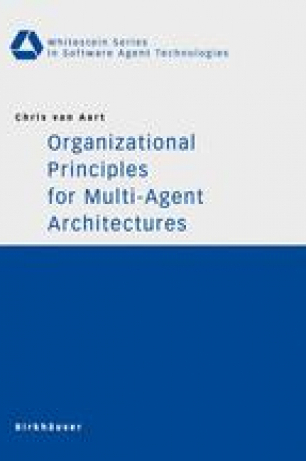
Organizational Principles for Multi-Agent Architectures
Publication year: 2005
ISBN: 978-3-7643-7318-4
Internet Resource: Please Login to download book
1. 1 Background In this work, we develop a framework for the design of multi-agent systems inspired by (human) organizational principles. Organizations are complex entities formed to ov- come various limitations of individual agencies, such as cognitive, physical, temporal and institutional limitations. There is a parallel between the complexity of organizations and multi-agent systems. Therefore, we explore the use of concepts, methods and techniques from human organizational design as architectural principles for multi-agent systems. Three research lines are presented: organizational modeling and coordination, interop- ability and agent models. Organizational modeling and coordination are concerned with how resources (i. e. agents) can be identi?ed and related to each other. In order to have agents cooperate, several issues of interoperability have to be addressed. Agent models deal with the design of individual intelligent software agents, taking into account typical features of agent intelligence. Every (human) activity raises two challenges: division of labor and coordi- tion [Mintzberg, 1993]. Division of labor is the decomposition of work (or goals) into various distinct tasks. Coordination refers to managing relations between these tasks to carry out the work. The patterns of division of labor, responsibilities (people who do the work), clustering of responsibilities into units and coordination between units can be de?ned by organizational structures [Galbraith, 1973]. The design of an organization should cover how one or more actors are engaged in one or more tasks, where knowledge, capabilities and resources are distributed.
Subject: Computer Science, Agent technology, Information systems, Multi-agents, architecture, intelligence, intelligent systems, multi-agent system, ontology, organization, problem solving